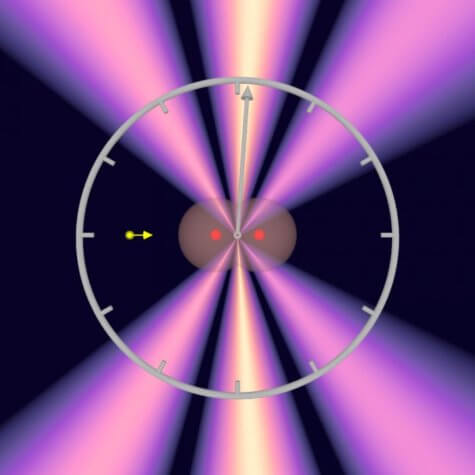FRANKFURT, Germany — The blink of an eye seems to most people like an incredibly fast act. Scientists in Germany however, say they’ve witnessed something that makes the blink of an eye seem as slow as watching paint dry. Atomic physicists at Goethe University have measured the time it takes for a photon to cross a hydrogen molecule; a process that can only be measured in zeptoseconds.
In 1999, Egyptian chemist Ahmed Zewail won the Nobel Prize for measuring the speed of molecules changing their shape. Zewail founded the science of femtochemistry, which measures the formation and division of chemical bonds in femtoseconds. This revolutionary measurement equals 0.000000000000001 seconds.
The new study has now broken this record, finding that it takes 247 zeptoseconds for photons to cross hydrogen molecules. Study authors explain that a zeptosecond is one trillionth of one billionth of a second, or 0.000000000000000000001 seconds.
Scientists irradiated a hydrogen molecule (containing two protons and two electrons) with X-rays to help them measure this record-breaking process. They set the X-ray energy to a level that causes a single photon to expel both electrons from the molecule.

How did scientists reach zeptoseconds?
The study explains that electrons behave both like particles and waves. When one electron is expelled it produces waves which quickly trigger the same thing to happen in the other.
Just like waves in the water, researchers say the photon skims across them like a pebble going across a pond. When the waves from these two electrons meet however, they cancel each other out. This is called an interference pattern.
The German team then measured this pattern using the COLTRIMS reaction microscope, which helps scientists see ultrafast processes within atoms and molecules.
“Since we knew the spatial orientation of the hydrogen molecule, we used the interference of the two electron waves to precisely calculate when the photon reached the first and when it reached the second hydrogen atom,” researcher Sven Grundmann explains in a university release. “And this is up to 247 zeptoseconds, depending on how far apart in the molecule the two atoms were from the perspective of light.”
“We observed for the first time that the electron shell in a molecule does not react to light everywhere at the same time. The time delay occurs because information within the molecule only spreads at the speed of light. With this finding we have extended our COLTRIMS technology to another application,” Professor Reinhard Dörner adds.
The study appears in the journal Science.
